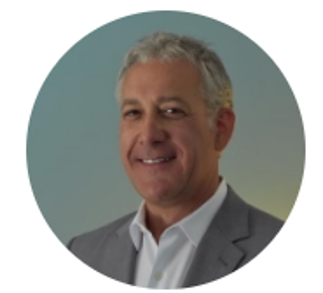It is said that hindsight is 20/20. But is it? What I've learned in Interacting with Individuals (Agile Value#1), is to listen for assumptions. I am humbly aware of how crucial this is from when I made assumptions and was wrong—very wrong.
Have you ever gone out to dinner or shopping and assumed you had your wallet? Or assumed your credit card was in your phone? Or continued en route when you assumed you knew where you were? Maybe you have found yourself at the end of a long conversation with someone only to learn you've been talking about two different things. We can all likely think of a situation where we made an assumption, and the outcome was negatively impacted as a result.
When we think of the flow of solution development in an organization, the value delivered is often better, sooner, safer, and happier when expectations are clearly stated, and assumptions are checked.
Before our next response to whatever is being said, seen, heard, or felt, CYA! That is, listen for and Check Your Assumptions. You will likely find as I have, doing so will pave the way to better value sooner, safer, and [especially] happier (Smart, 2020) in whatever your interaction and purpose. Value Stream Management (VSM) provides a disciplined approach to do just that.
In working with clients, I usually see that the processes and workflows for implementation are falling short, not the technology. By revisiting an organization’s processes, applying "value stream thinking,” and identifying value streams, organizations can unlock the flow of value they had envisioned. Be it inside a development value stream or the operational value stream it supports, overall flow of better business value sooner, safer, and happier requires strict attention to VSM.
So what does this take? When there’s doubt and uncertainty, what can we do to avoid conflict or confusion from misunderstanding? Let’s look at just a few ways to start checking assumptions for better outcomes from interactions. When you do, you may discover as I have, that you didn’t understand as much as you thought.
Active Listening
We’ve all heard the term, but what does active listening really mean? One may ask, how can listening be inactive? Listening well beyond what is being said is key to deeper understanding. By intently listening to what each other is expressing verbally and non-verbally, we are better prepared to check our assumptions, as well as theirs.
By actively listening, I am not referring to simply rewording in one’s own understanding with foregone conclusions. Rather, it’s asking if what you may have understood is correct, while being provisional versus certain, in that, our understanding may simply not be as intended or meant.
CYA starts with intently listening beyond the speaker’s words and our own. This must be done with care and grace. We can have assumptions even in our listening, so this includes listening to ourselves and what we are thinking, concluding, feeling, or inferring. Simply parroting back in our own words what we think we heard can be filled with unconscious bias, emotion, or any number of other influences.
Ask Questions
As Stephen Covey outlined in his 7 Habits of Highly Effective People, we should seek to understand before seeking to be understood and seek win-win, not settle for win-lose. People are complex and so communication can be simply complicated. In questioning our assumptions, we do well to [also] be descriptive, not judgmental, and take an equal posture not one of superiority.
A few examples of how we may question our assumptions are:
- What I heard is x, by this do you mean y?
- When you say x, it seems to me you may feel y. Is this correct?
- Is y your desired outcome, or am I perhaps misunderstanding?
- As I describe what I hear and see, what are you feeling?
Other helpful considerations in checking our assumptions may include such things as:
- Am I interpreting the message consistently with their character as I know it?
- THINK - Is what I want to say True, Helpful, Inspiring, Necessary, and Kind?
- If I was interpreted this way, would I feel understood?
Simply asking clarifying questions instead of making conclusions may just be our most powerful tool in reducing conflict and building a shared understanding.
Build a Shared Understanding
Many interpersonal conflicts occur simply from misunderstanding. A primary goal of checking our assumptions is to establish a shared understanding.
To overcome such conflicts and build more congruence among individuals and interactions, take time to recognize and uncover assumptions and unspoken expectations which will promote better outcomes.
Again, the data that VSM provides helps build this shared understanding. The new VSM tools help craft a framework to visualize and identify pain points, bottlenecks, and constraints throughout the business with everyone in the organization having a single source of truth. Gut-level assumptions are replaced with hard data that guide better decisions to improve your organization’s future.
Final Thoughts
At the fast pace and pressures of today’s world, it can sometimes be easier and simply quicker to operate on assumptions. It’s our nature to draw quick conclusions through our own lenses, rather than take the time and effort needed to listen for and confirm these assumptions.
But then, are all assumptions bad or negative? Do we really need to check each one all the time? Not at all. We need to be able to operate on some assumptions, and we do so every day. I assume my car is going to start when I need to drive somewhere. I don’t plan for time to get a tow every morning. Or another example, when we are told we are loved by someone, we assume that person will defend and speak highly of us in our absence. These positive assumptions are the topic for another day.
In the meantime, we can train ourselves to listen for and check assumptions. While being thankful for the good assumptions we get to operate our lives from, not relying on real data from VSM outputs blinds us to improving the flow of value. CYA your way to improving business outcomes—leverage VSM today to future-proof your investments!

Jim Rice
Jim is a certified Enterprise Business Agility Strategist and Professional Agile Coach at NTT DATA Services. For 30+ years, he has served to cultivate high-performing teams and organizations that deliver better value sooner, safer, and happier to their customers, and in turn, achieve the business outcomes desired.









Comments 0